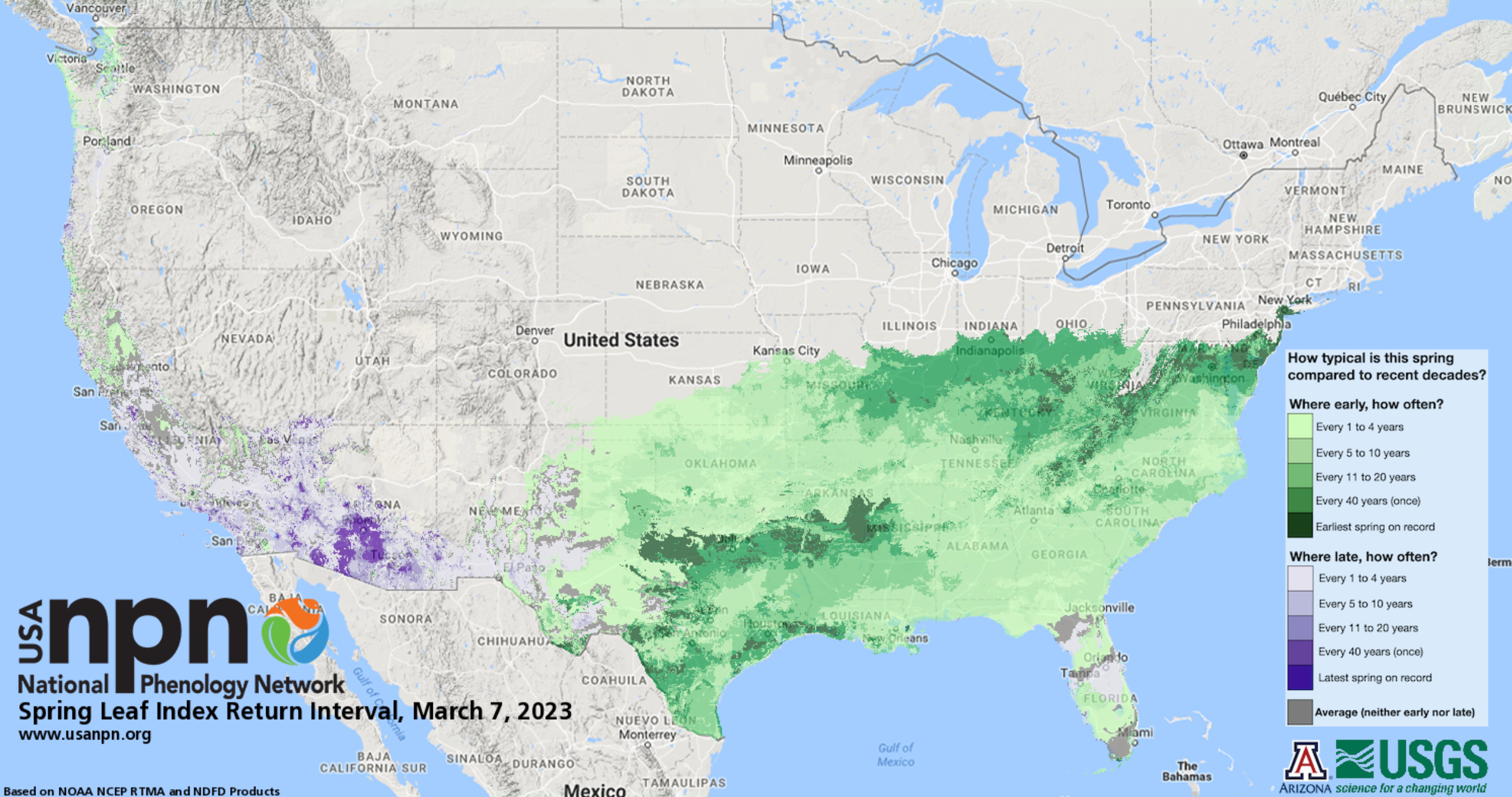Record-breaking early spring across large parts of US
Spring has come 22 days early in Indianapolis and 20 days early in Philadelphia
Spring has sprung three weeks early in a number of places across the United States.
For much of the southeast, lower midwest, mid-Atlantic, and New York City area, it’s either the earliest spring on record or the earliest in 40 years. On the flipside, parts of Arizona are seeing a spring that only occurs this late once every 40 years.
Spring has arrived 22 days early in Indianapolis and 20 days early in Philadelphia.
But while spring is spreading north, it’s a mixed bag in western states. Across southwest Utah, for example, spring is either a few days to more than a week late. In Portland, Oregon it’s two days late.
In Charlotte, North Carolina, spring bloom is 22 days ahead of schedule but on the west coast, it’s six days late in San Francisco. Spring bloom has also arrived early in parts of the Southeast, compared to being a week late in the Southwest.
The update was provided on Monday by the National Phenology Network, a scientific organisation which measures the onset of spring using two indexes.
The First Leaf Index is based on lilacs and honeysuckles getting their leaves, as they are typically the first plants in spring to do so. The First Bloom Index is based on the flowering of lilacs and honeysuckles.

Shifting seasons are directly linked to the global climate crisis, scientists say, and even incremental changes in temperature can bring early spring, and delay the arrival of the cold in fall.
These seasonal changes will have myriad consequences for both the natural world and society. While delayed winter may mean longer growing seasons, it could also increase invasive species and pests due to lack of cold temperatures to kill them off.
Jolts of warm weather in winter can trigger a so-called “false spring,” meaning that plants and crops bloom too early and are vulnerable to snap freezes, a trend that has been increasingly observed in the US, the EPA warns.



Join our commenting forum
Join thought-provoking conversations, follow other Independent readers and see their replies
Comments